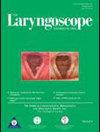Ergonomics in Facial Plastic and Reconstructive Surgery: A Clinical Evaluation
Abstract
Objectives
Surgeons experience a risk for physical strain and injury secondary to physical demands in the workplace. To minimize injury and maximize career longevity, physicians should be aware of ergonomics pitfalls and postural correction methods. This study investigates ergonomic trends in Facial Plastic and Reconstructive Surgery (FPRS) clinic by quantifying surgeons' and trainees' cervicothoracic spine posture.
Methods
Participants completed a 22-item questionnaire to evaluate current ergonomic practices. A lightweight device was calibrated and attached to the mid-scapular region of participants, providing real-time posture feedback. The percentage of time in upright posture was recorded during clinical and operative workdays. Upright posture was defined as neutral spine positioning with acceptable mild to moderate deviations.
Results
Two FPRS attending surgeons, 1 FPRS fellow, and 11 otolaryngology residents participated over 12 months. Discomfort was most commonly reported in the neck, shoulders, and upper back during clinic. Symptoms were self-treated by changing body position, wearing specialized footwear, adjusting height of the chair or examination table, or ignoring discomfort. Eighty-two percent were unaware of ergonomic guidelines or appropriate considerations. Time spent in upright posture was significantly higher in clinic (84.9%) than in the OR (53.5%) (p < 0.001). Upright posture declined after reaching 6 work hours (p = 0.029); no such patterns were observed in the OR (p = 0.946).
Conclusion
Although time spent in upright posture was objectively poorer in the OR, these data suggest ergonomics are an important consideration in the outpatient setting, with surgeons experiencing discomfort during and after clinic. Further investigation is warranted to identify actionable changes and promote healthy ergonomics.
Level of Evidence
NA Laryngoscope, 135:1379–1385, 2025

 求助内容:
求助内容: 应助结果提醒方式:
应助结果提醒方式:


